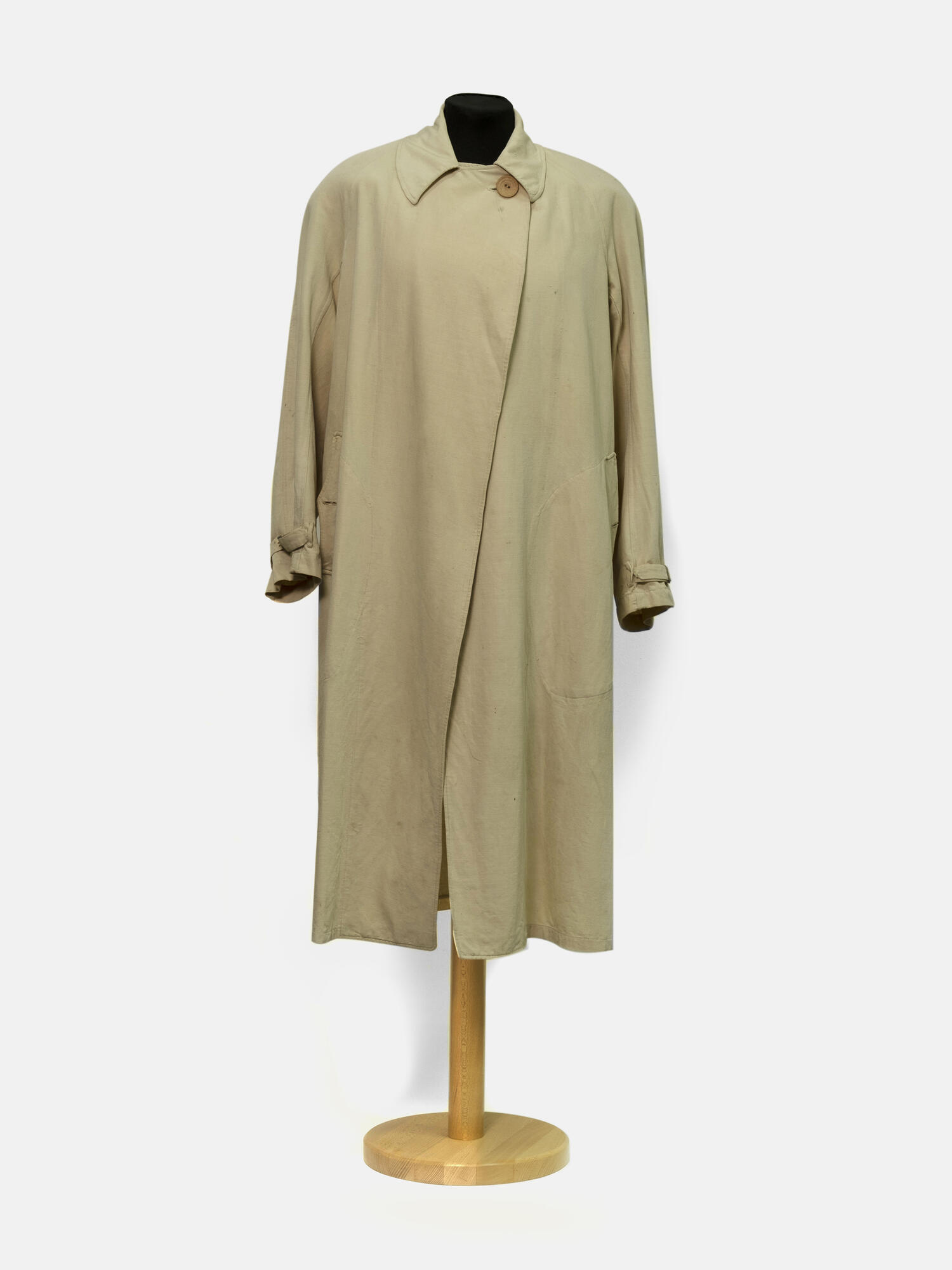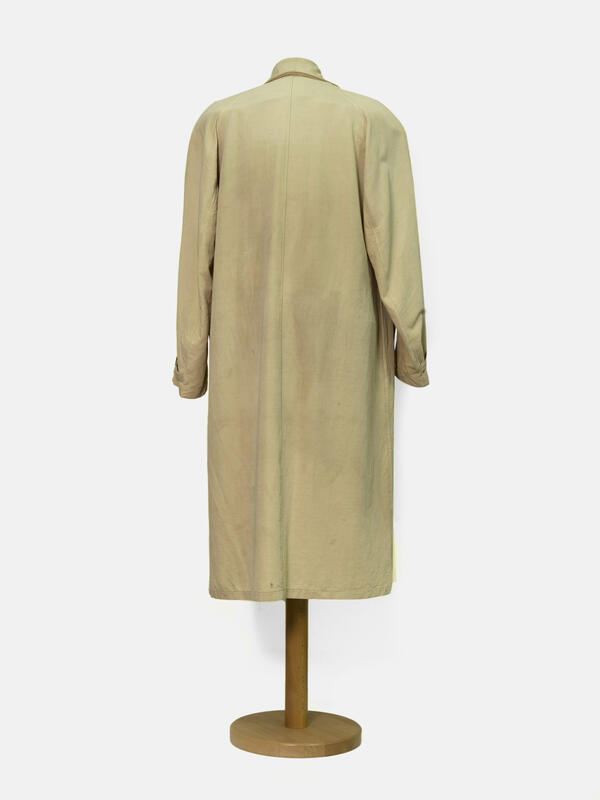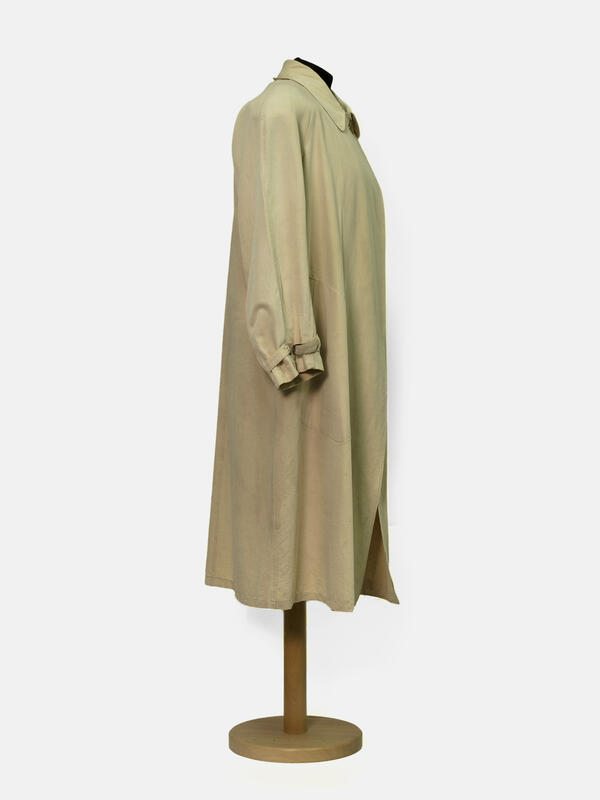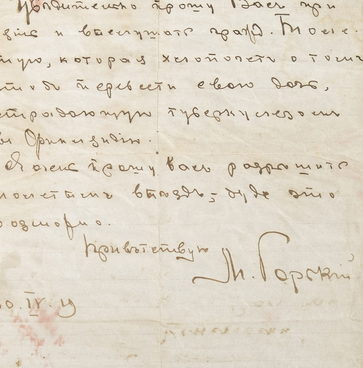Maxim Gorky’s summer coat is made of dense silk fabric with no lining according to the fashion of the 1920s–1930s. Gorky spent 18 years in Europe and became a true connoisseur of fashion and high-quality clothing. The idea of Russian people all wearing the same standard clothes in an effort to fit in with the crowd felt strange to him. In turn, individuality was not welcome in the young Soviet country that embraced the ideology of collectivism.
In August 1928, Maxim Gorky came to Kazan from Sorrento, Italy. He was wearing this light-colored coat, which was later donated to the museum by the writer’s relatives. Gorky visited the memorable places of his youth and important city institutions in Kazan, including the Kazan University, the House of Tatar Culture, the National Museum, the university preparatory school for farmworkers, and the Vladimir Lenin Clinical Institute. Numerous photographs taken during that time show a sharp contrast between the writer’s flamboyant style and the modest clothes of Soviet citizens.
Gorky had great respect for the personality traits and uniqueness of people from different cultures and tried to instill into the society an appreciation for different civilizations, ways of life, and appearances. He dreamed of publishing the works of Siberian, Belarusian, Ukrainian, Latvian and Tatar writers and prompted the creation of the Union of Writers of the Tatar Republic. Gorky traveled extensively across various regions and cities and was an adherent of what is called tolerance nowadays. After a trip to Kazan, he said,




